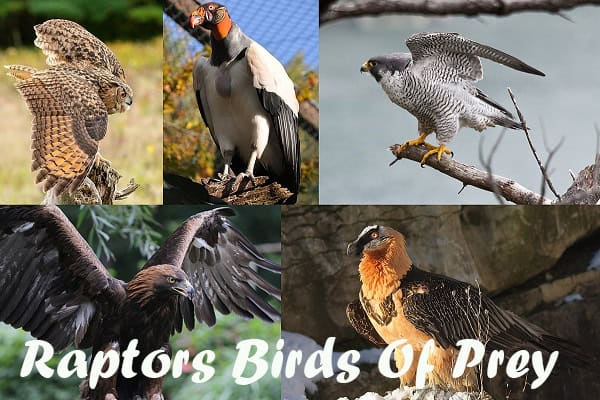Raptors Birds Of Prey: Majestic Aerial Hunters
Have you ever been amazed by the beauty and skill of raptors Birds Of Prey, those amazing birds that rule the skies? These top predators, with their sharp claws and great eyesight, are what we’re looking into. Let’s explore the world of birds of prey or raptors. We’ll learn about their majestic aerial displays and hunting techniques that make them the best aerial hunters out there.
Raptors are a group of birds known for their amazing hunting abilities and interesting behaviors. From the high-flying eagles to the super-fast falcons, these raptor predators have special traits that let them be the top birds in the sky. As we dive deeper into their world, get ready to see the incredible power and beauty of these aerial hunters.
Raptor Cartwheel
Raptors, the majestic birds of prey, have amazing skill in the air. They perform a stunning move called the raptor cartwheel. This move shows off their incredible flying skills and agility.
What Is The Raptor Cartwheel?
The raptor cartwheel is a fascinating move seen in many raptor species. It starts with two raptors locking talons in mid-air. Then, they fall towards the ground in a spiral, like a cartwheel.
Why Do Raptors Cartwheel?
Experts say raptors cartwheel mainly because of aggression. This aggression comes from fighting over food, territory, or protecting their young. Studies show most cartwheels happen during aggressive acts among raptors.
Cartwheeling As An Act Of Courtship
But, cartwheeling can also be a sign of courtship or play, especially in young raptors. Species like the tawny eagle, bald eagle, and bearded vulture use it in their courtship. It helps improve their flying skills and builds strong bonds in their groups.
Sometimes, the raptor cartwheel can lead to crashes with objects below. This can cause injuries or even death. Yet, this incredible display still amazes and inspires people who see the power and beauty of these birds.
Hunting Techniques of Diurnal and Nocturnal Raptors
Raptors, the majestic birds of prey, can be divided into two main groups. Diurnal raptors hunt during the day, while nocturnal raptors hunt at night. Each group has unique hunting techniques suited to their environment.
The Hunting Techniques of Diurnal Raptors
Diurnal raptors include eagles, hawks, falcons, and kites. They use their powerful talons, speed, and aerial skills to catch prey. Their sharp eyesight helps them spot targets from far away. Then, they dive fast to grab their prey.
Hunting Techniques of Nocturnal Raptors
Nocturnal raptors, mainly owls, have special adaptations for low light. They use silent flight and sharp hearing to find and catch prey at night. Owls can fly quietly and rely on their senses to detect prey’s movements or sounds.
Differences Between Nocturnal and Diurnal Raptors
Diurnal raptors rely on eyesight, speed, and strength for hunting. Nocturnal raptors, like owls, have bigger eyes and better night vision. They also have feathers that help them fly silently, making hunting at night possible.
The hunting methods of diurnal and nocturnal raptors show how diverse and specialized they are. Whether it’s the fast attacks of diurnal raptors or the silent flights of nocturnal owls, these birds have perfected their hunting skills. They are top hunters in their worlds.
Raptor Surveys
We know how vital it is to watch over raptor populations. These birds are key to keeping our ecosystems in balance. That’s why we use special surveys to learn more about them. These surveys help us understand how to protect them.
When we do raptor surveys, we consider many things. This includes how easy it is to spot the birds, their age and gender, and the weather. We also look at the type of land, the food available, and how different people might see things differently. By using different methods, like watching nests and counting birds on their migration, we learn a lot about these birds.
Knowing how many raptors there are helps us make smart choices for their protection. These birds are important for our environment’s health. By keeping an eye on them, we can make sure they stay safe for the future.
| Metric | Value |
|---|---|
| Number of bird species observed | 154 |
| Average bird survey density | 2.8 birds/hectare |
| Average tree density | 180 trees/hectare |
| Average shrub cover | 35% |
Recent surveys show us why protecting these birds is so important. By watching their numbers and the places they live, we can make better choices. This helps us take care of these amazing birds and their homes.
Golden Eagles: Regal Raptors of North America
The golden eagle (Aquila chrysaetos) is a symbol of North American wildlife. These birds have a wingspan of 6 to 7 feet, making them one of the largest birds of prey. They live in many places, from mountains to prairies, showing their adaptability.

Habitat and Geographic Range
Golden eagles live across North America, mostly in the western United States and Canada. They can be found in deserts, forests, and mountains. Their ability to live in different places shows their strength and the balance of nature.
Physical Characteristics
Golden eagles stand out with their golden-brown feathers and sharp beaks. Adults can be up to 33 inches long and weigh over 13 pounds. They have a wingspan of up to 7 feet. Their size, eyesight, and talons make them great hunters and aerial performers.
Taxonomy and Subspecies
The golden eagle is part of the Accipitriformes order and the Accipitridae family. In North America, there are several subspecies with different sizes, colors, and behaviors. This shows the eagle’s ability to adapt and the diversity of North American raptors.
Raptors Birds Of Prey
The majestic raptors soar through the skies, showing off their amazing mating and nesting ways. These birds, like the golden eagle, have special ways to make sure their species keeps going. They do this with beautiful courtship displays that help them form strong bonds and reproduce successfully.
Mating Rituals
When it’s time to breed, raptors like the golden eagle do amazing aerial tricks to find a mate. The male and female fly together, doing dives and cartwheels to show off their skills. This helps them connect and shows they’re a good match, which is key for mating behaviors.
Nesting Practices
After finding a mate, the female raptor builds a big nest called an eyrie. Both parents take turns incubating the eggs, which can be one to four in number. The eggs hatch after about 40 to 45 days, and the parents keep feeding and protecting the eaglets until they’re ready to leave the nest, usually in 70 to 90 days. This teamwork is crucial for the eagle lifecycle, helping the young eagles grow into skilled hunters.
The amazing raptor reproduction and nesting habits show how tough and adaptable these top predators are. By learning about their lifecycles, we can see how incredible these birds are. This helps us work towards saving these amazing creatures.
Check Our Previous Articles:
Prey Preferences and Hunting Prowess
Raptors are top predators in their ecosystems, known for their hunting skills and varied diet. They mainly go after medium-sized mammals like rabbits, hares, and ground squirrels. These animals are common in the areas where raptors hunt.
With their strong talons and sharp eyesight, raptors catch and overpower their prey. This helps keep their ecosystems in balance. Their hunting ways and what they eat show how important they are as top consumers in nature.
| Raptor Species | Primary Prey | Percentage of Diet |
|---|---|---|
| Sharp-shinned Hawk | Birds | 96.5% |
| Cooper’s Hawk | Birds | 91.3% |
| Northern Goshawk | Birds and Mammals | 79% Birds, 80% Mammals |
| Buteo Hawks | Mammals, Birds, Reptiles, Amphibians, Invertebrates | 41% Mammals, 27% Birds, 12% Reptiles, 10% Amphibians, 10% Invertebrates |
| Gray Hawk | Reptiles | 68.6% |
| Common Black Hawk | Fish | 59% |
| Harris’s Hawk | Mammals | 91% |
| Peregrine Falcon | Birds | 77% to 99% |
| Gyrfalcon | Birds | Up to 95% |
| Prairie Falcon | Birds and Mammals | 95% Birds, Varies by Region |
| Merlin | Small Birds, Bats, Dragonflies, Small Rodents | Up to 90% of Small Birds |
Raptors have diverse diets and hunting skills, showing their adaptability and importance in their ecosystems. They eat a wide variety of animals, from rodents to large birds. This helps control the populations of their prey and keeps the environment healthy.
Wrapping Up…
Raptors, or birds of prey, are truly amazing creatures. They capture our attention with their stunning flight and hunting skills. From the breathtaking raptor cartwheel to their varied hunting methods, these birds show how adaptable and important they are for our ecosystems.
Thanks to raptor conservation efforts and research, we can learn more about and protect these incredible aerial predators. This ensures they can keep flying high above us for many years. Exploring the world of raptors helps us appreciate the complex life web and why we must save these majestic birds of prey.
Raptors are key to our natural world’s balance. Their survival shows the strength and beauty of nature. By supporting conservation and understanding these birds better, we help keep the skies filled with raptors. This inspires wonder and awe in us all for a long time.







